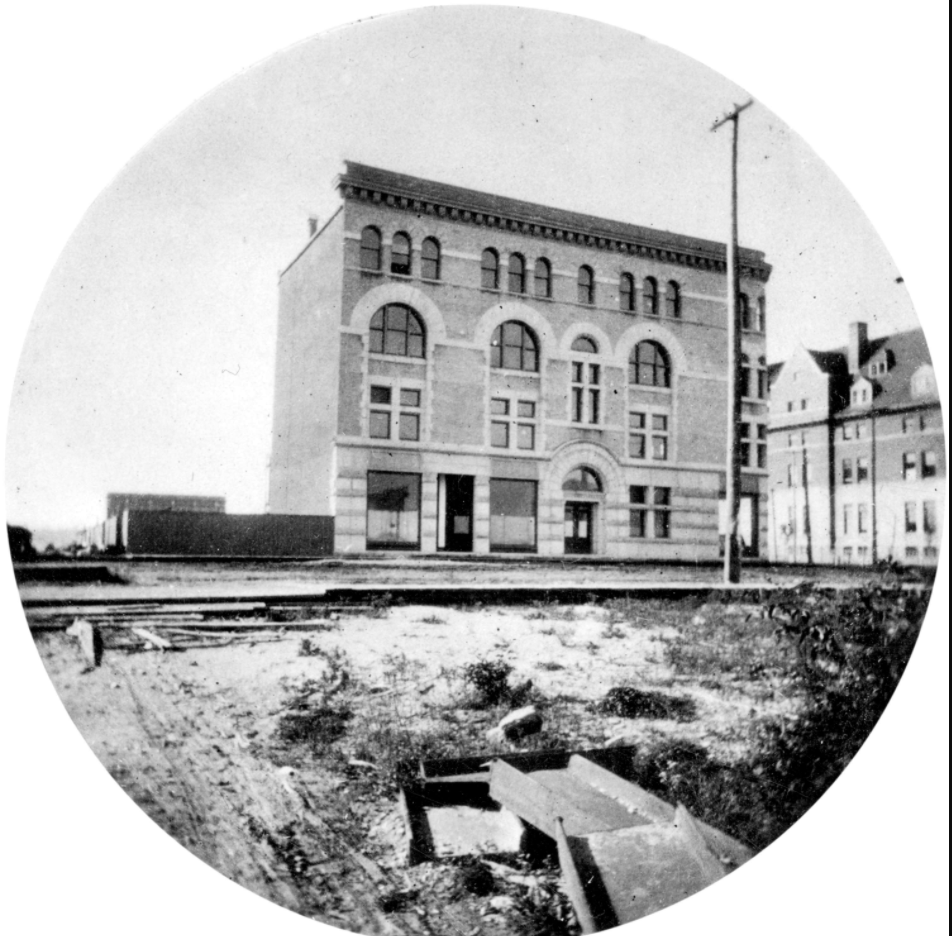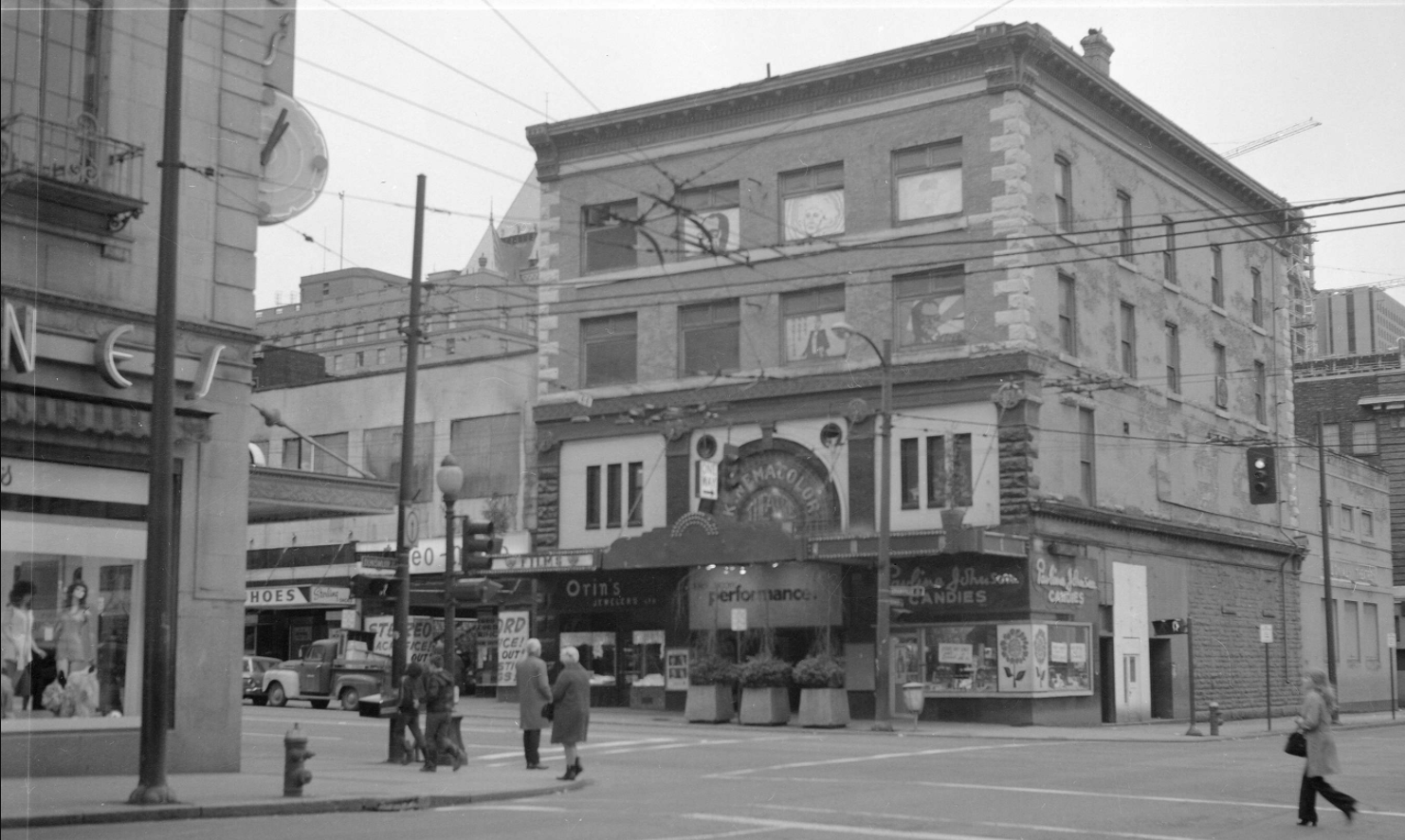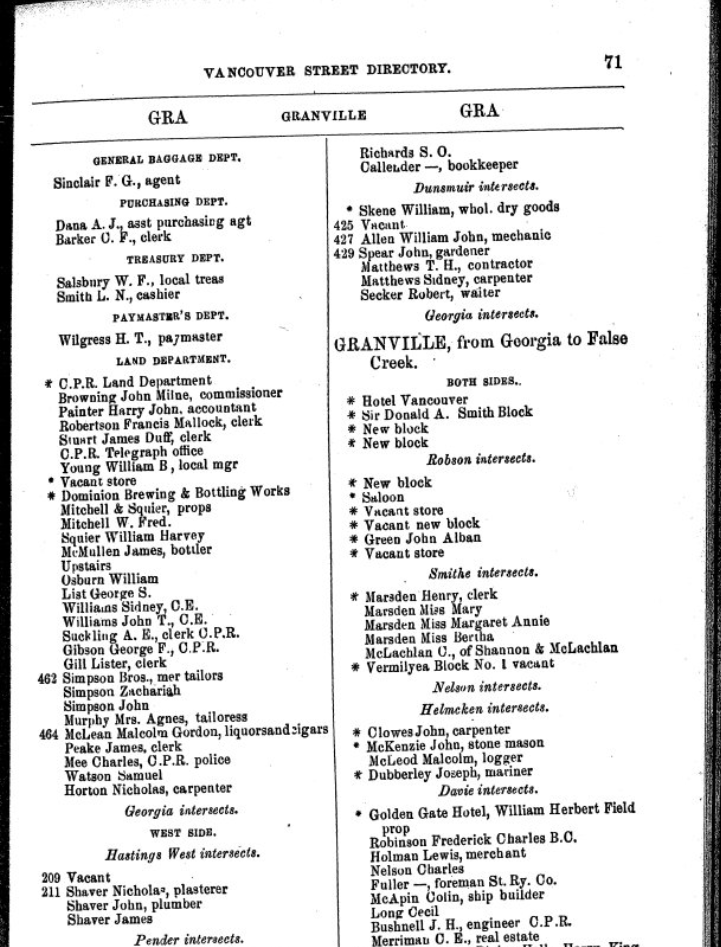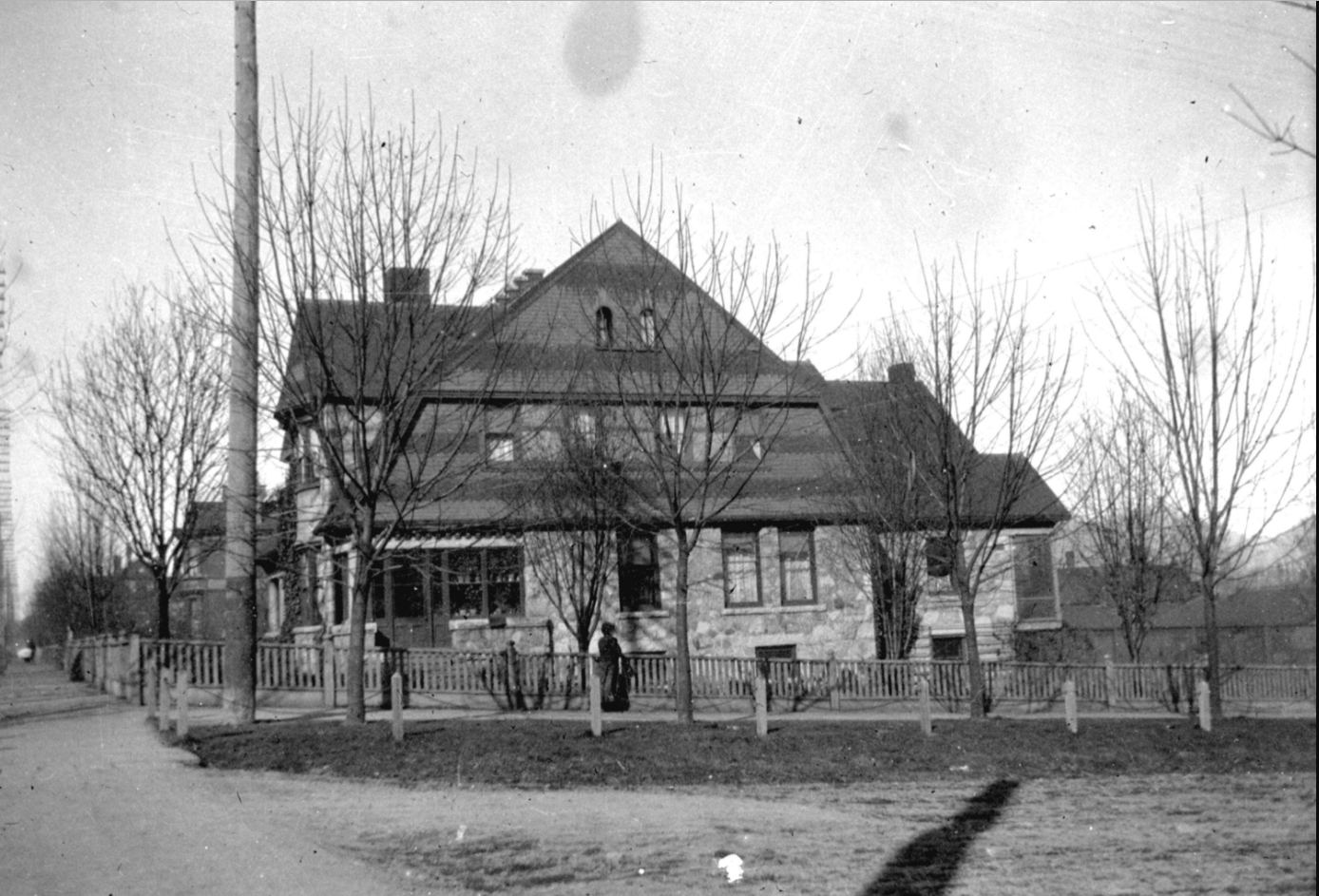It’s Heritage Week (February 19 – 25) and if you’re looking for something to do Sunday, drop by Heritage Hall on Main Street and check out the Vancouver Heritage Foundation’s community fair. This year’s theme is Layer by Layer. It’s a great opportunity to meet a host of different community groups and take in Brian Walters’ seven-minute, award-winning virtual reality film.
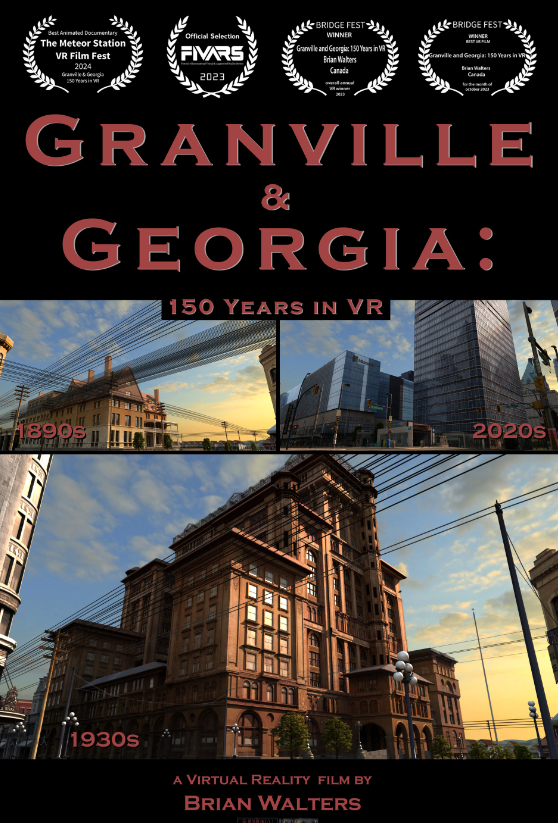
I first met Brian Walters a little over two years ago. He invited me to his North Vancouver house to watch an early version of his virtual reality film Granville and Georgia Streets: 150 years.
It was the first time I’d put on a Virtual Reality headset, and instead of just looking at old pictures of long-defunct buildings, I was suddenly immersed in the middle of them. Starting with Granville and Georgia when it was all forest, in the next seven minutes I travelled through time as buildings came and went, horse and carts changed to streetcars to buses to cars and to Skytrain.

I saw the first Hotel Vancouver and then the second Hotel Vancouver, the parking lot that replaced it, and a few decades later, the arrival of Eatons and the Pacific Centre. Three of Vancouver’s earliest office buildings designed by Bruce Price in the 1880s morphed into the Strand Theatre and the Birks Building. And, an even worse travesty, those buildings were replaced in the early 1970s by the Scotia Tower and the ugly little building that currently houses London Drugs.
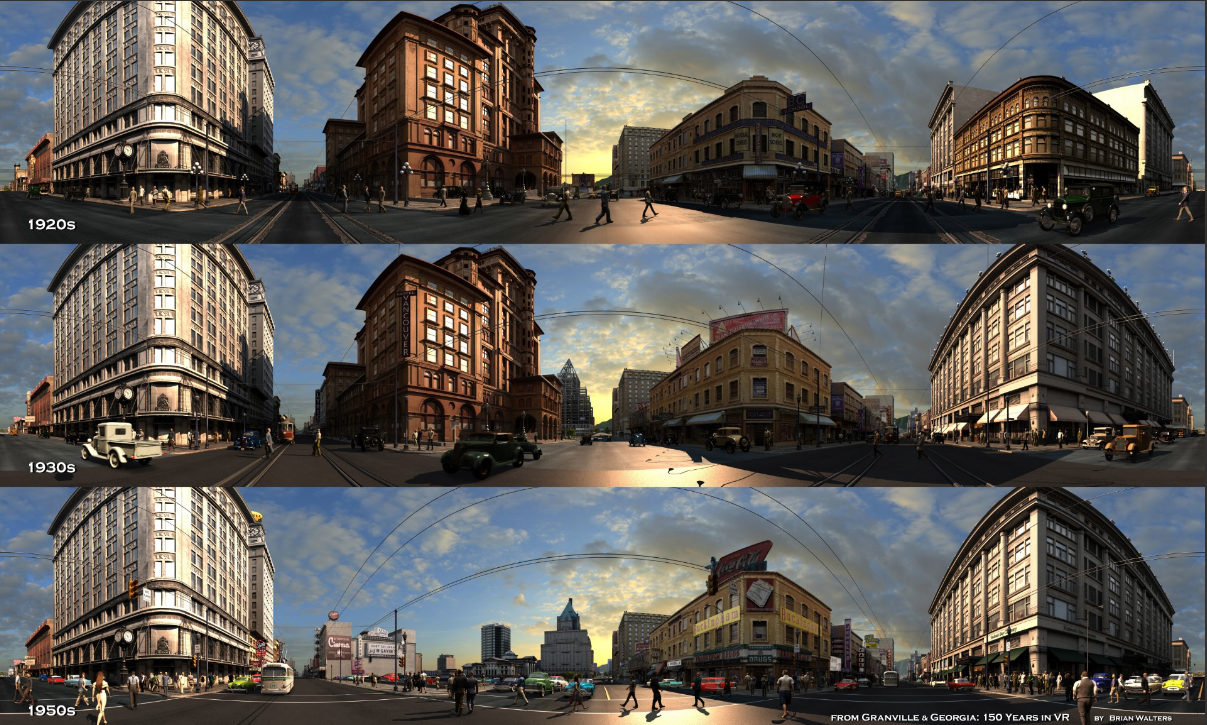
The VR film is now complete, and I’m proud to say that I co-wrote the script with Brian. The original score is by Shie Rozow, and the film is narrated by John Clinton. It’s a truly remarkable sensory experience. I could almost reach out and pat a horse trotting across Granville Street, and at one point, I jumped out of the way of a streetcar. For car buffs, there is a 1937 Cord and a 1948 Tucker. A man crossing the intersection in the 1950s stopped to stare at me, and the clothes and car models changed along with the passing of each decade.
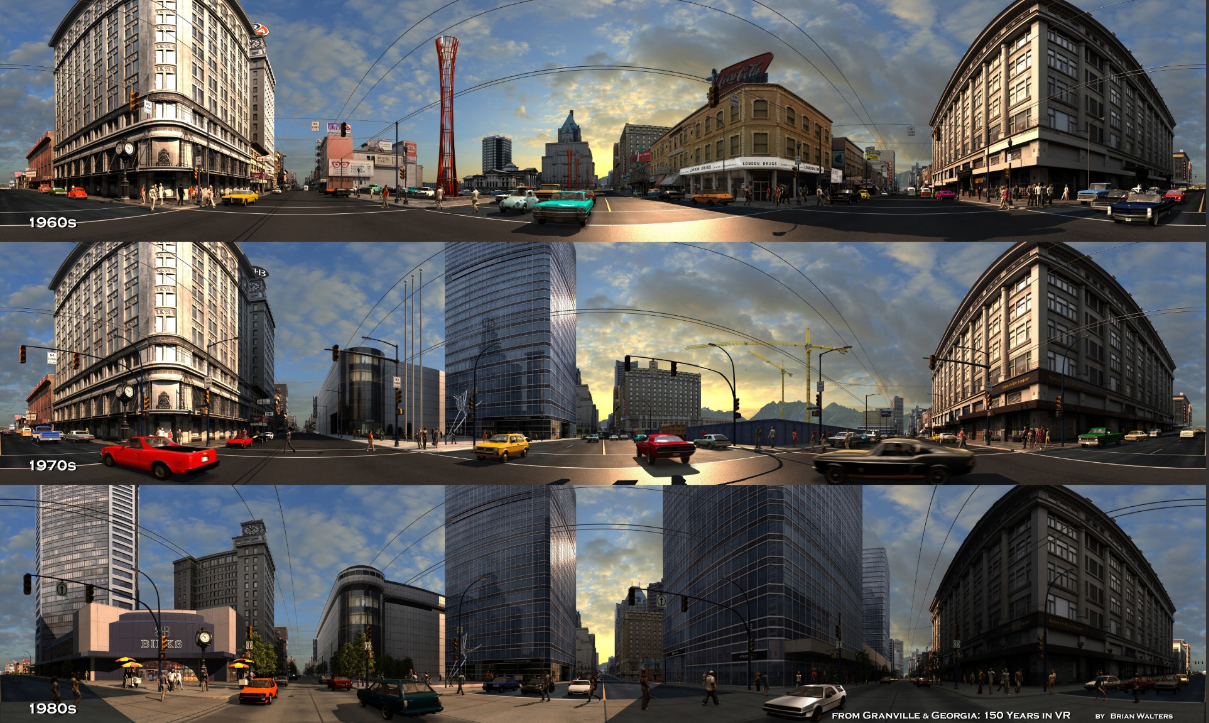
In his day job, Brian is a Layout Supervisor at Sony Pictures Imageworks where he has worked on 24 films over the past 12 years. “My job is to take storyboards and bring them to life in a 3D world through character blocking and camera composition,” he says. Brian’s film credits include the Oscar-winning Spiderman: Into the Spiderverse; Men in Black: International and Cloudy with a Chance of Meatballs 2. He also co-designed the steampunk drum kit Neal Peart played when RUSH was inducted into the Rock and Roll Hall of Fame.
Prior to COVID, Brian’s workplace was sandwiched between Nordstroms and Microsoft at Granville and Georgia Streets. “When I first saw a picture of the second Hotel Vancouver, that used to sit where I was sitting, I knew that I had to bring it to life,” he says. His self-described pandemic project has notched up about 600 hours of his unpaid time.
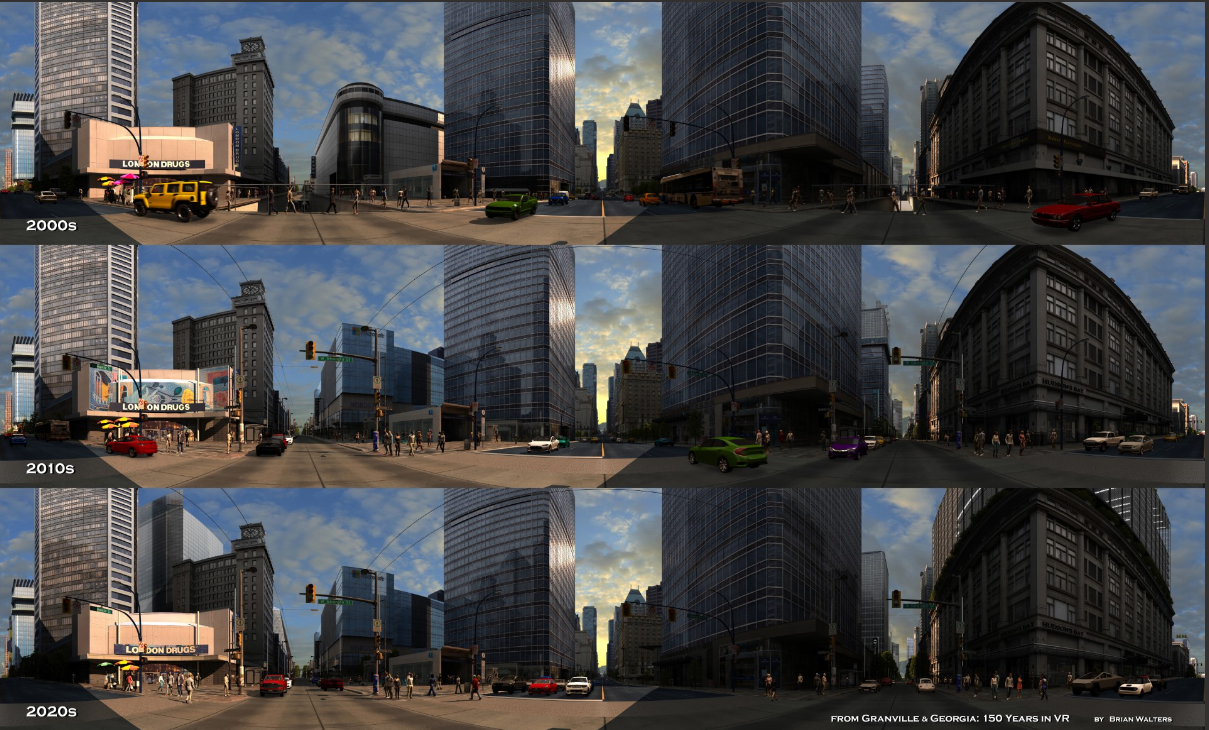
Brian will be showing his VR film this Sunday February 25 at Heritage Hall on Main Street, Vancouver. He’ll be joined by a variety of local organizations including Forbidden Vancouver Walking Tours, Chinese Canadian Museum, Hogan’s Alley Society and Mount Pleasant Stories. For a full list see: Vancouver Heritage Foundation
© All rights reserved. Unless otherwise indicated, all blog content copyright Eve Lazarus.




